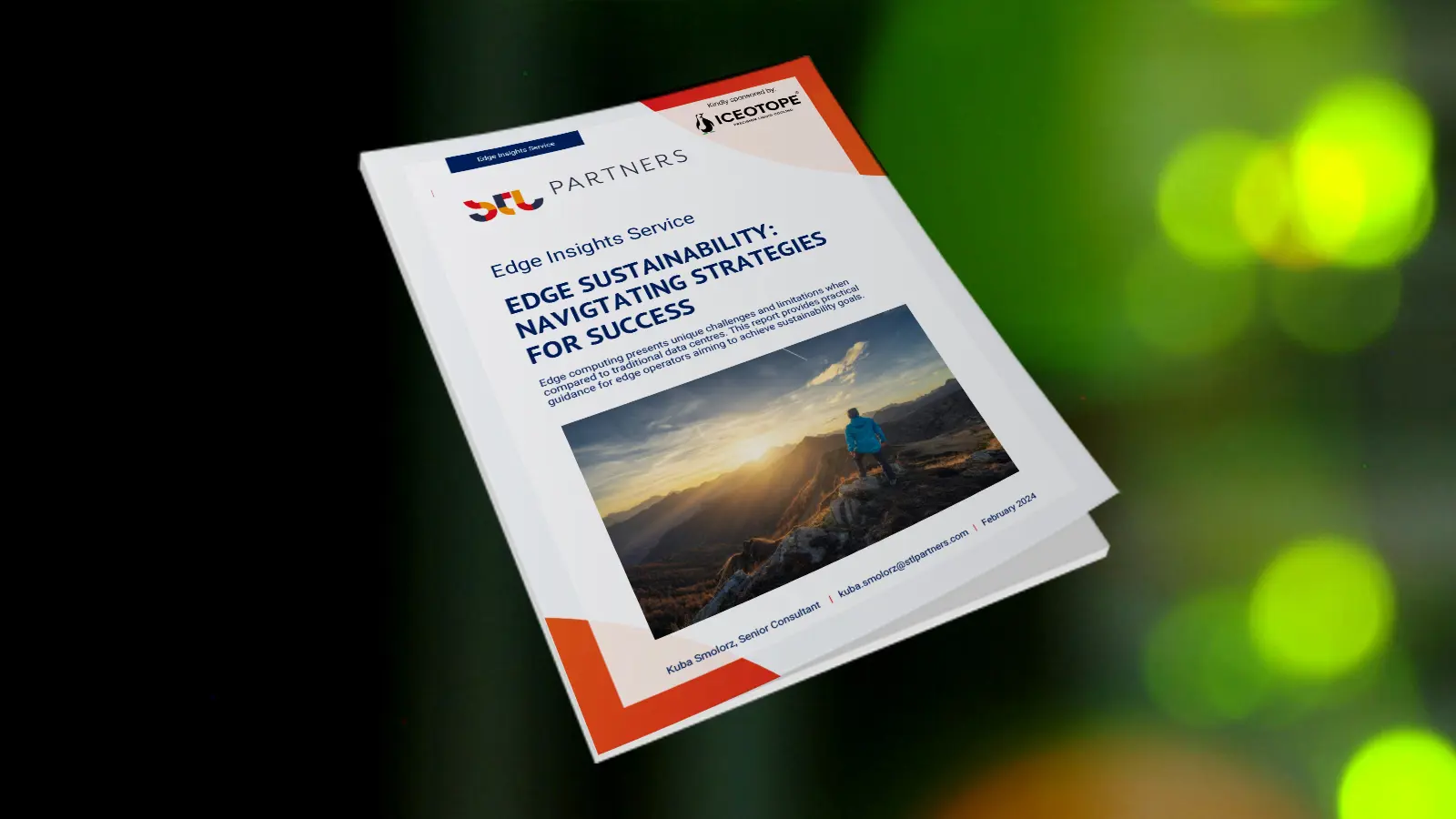
Date published
15 Feb 2024
Author
Iceotope
-
New report from STL Partners projects potential annual energy savings of up to 5% equating to ~$40 million in energy costs and over one million tons of carbon dioxide equivalent of emissions for a large group operator
-
Report ranks strategies based on relative effectiveness in addressing key edge sustainability factors
-
Based on seven key criteria for comparing cooling strategies, Precision Liquid Cooling ranks highest
To help telco providers navigate sustainability at the edge, STL Partners has released a new report, “Sustainability Insights: Navigating Sustainable Edge Strategies”. The report finds that advanced edge sustainability strategies can reduce telco providers energy usage by 3-5% and one million tons of carbon dioxide equivalent (tCO2eq) of emissions for a typical large group operator. These strategies, including Precision Liquid Cooling, could save a typical large group telco operator up to $40 million a year in energy costs.
While traditional data center sustainability has made significant strides, edge sustainability remains an overlooked concern amid anticipated growth in edge computing. More so than in centralised cloud computing, sustainability at the edge poses its own unique challenges due to varied environments. Tailored, situation-specific strategies become essential for sustainable edge operations, considering each operator's unique infrastructure, environment, and resources.
In the report sponsored by Iceotope, STL Partners looks at five subcategories of specialised cooling technologies – Precision Liquid Cooling - Liquid to Air, Precision Liquid Cooling - Liquid to Liquid, Tank Immersion (Single and Two Phase), Direct to Chip Water Cooling, and Specialised Hardware - Ruggedised Servers. Precision Liquid Cooling - Liquid to Air technology - adopted by Iceotope for its KUL RAN solution – ranked highest amongst the cooling technologies, having been found to score well across six of the seven measurement criteria - legacy site reuse, energy use, water consumption, longevity of equipment, limited maintenance and COTS hardware adaptation.
“With edge computing projected to grow to over $450 billion in 2030, it is critical this growth is developed in as sustainable manner as possible – arguably more so than traditional centralised cloud,” said Philip Laidler, director of consulting for STL Partners. “This report examines the multitude of factors that need be considered when defining your edge sustainability strategy. There is no one-size-fits-all answer and edge operators must select the optimal advanced sustainability strategy based on their unique context.”
“As more data moves to the edge, new challenges for telco providers emerge. Greater sustainability, energy efficiency and serviceability across distributed workloads is needed more than ever before,” said Nathan Blom, Chief Commercial Officer for Iceotope. “We designed KUL RAN specifically to reduce power consumption and maintenance costs for telco providers as they bring data-center class compute to the extreme Far Edge. This report from STL Partners validates that advanced sustainability strategies can be a game changer for the Telco Edge.”
Precision Liquid Cooling efficiently captures nearly 100% of the heat generated by servers, cutting energy use by up to 40% and any water consumption by 96% across the entire telco data center estate from the cloud to the edge. This innovative technology allows for greater flexibility of IT solutions by eliminating hotspots, minimizing wasted space, and reducing water consumption. Compatible with the same rack-based architecture as air cooled systems, it simplifies serviceability in both data centers and edge locations.
To learn how telco operators can navigate their sustainability challenges at the edge, please download a copy of “Sustainability Insights: Navigating Sustainable Edge Strategies”.
To learn more about Precision Liquid Cooling, visit Iceotope at Mobile World Congress, 26th – 28th February 2024, in the following booths: HPE (Hall 3, Booth 3N10), Samsung (Hall 2, Booth 2M20), SK Telecom (Hall 3, Booth 3130) and Vodafone (Hall 3, Booth 3E11).
